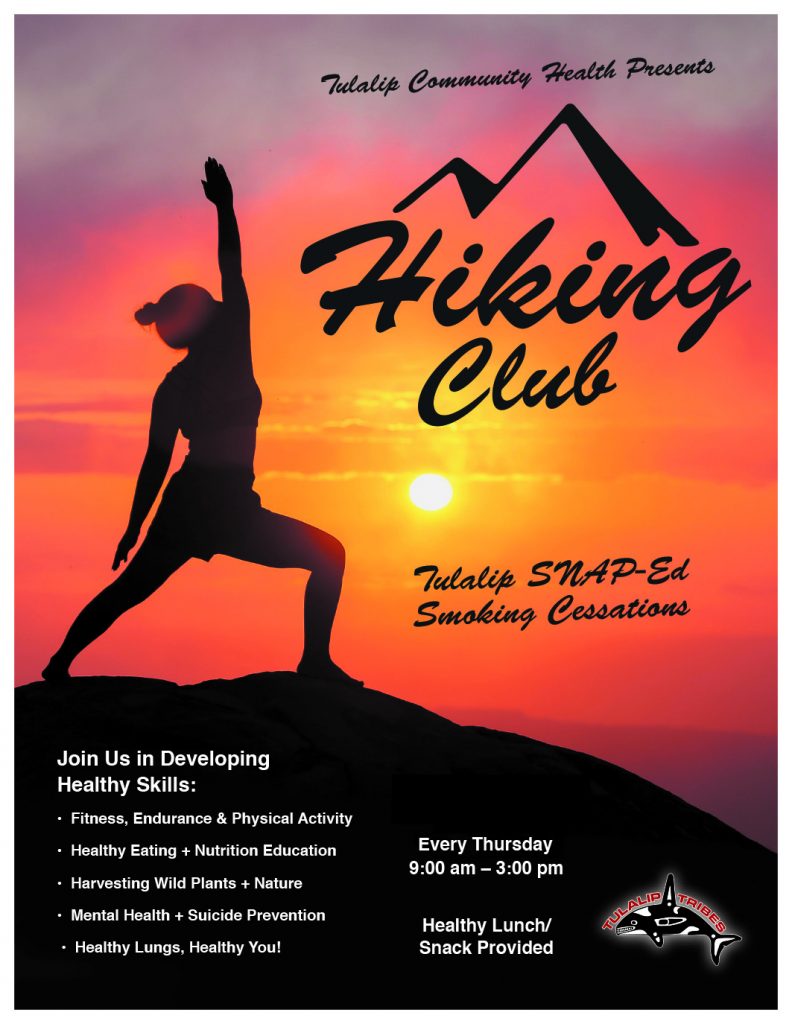
Hiking Club meets every Thursday

syəcəb


The new Quil Ceda Creek Casino is scheduled to open early next year
TULALIP, WA – A major commitment to food excellence and state-of-the-industry “green kitchen” operations are among the attractions coming to the new Quil Ceda Creek Casino, slated to open in early 2021. The centerpieces for the enhanced culinary focus include “The Kitchen,” offering guests casual dining with an array of made-to-order menu choices and “The Landing,” an exciting a la carte dining experience. Menu items will spotlight fresh, local ingredients from Northwest suppliers and prepared with the latest “green cooking” techniques.
“The unveiling of ‘The Kitchen,’ ‘The Landing’ and other new food and beverage venues will support our goal of providing guests with a total gaming, dining and entertainment experience,” said Belinda Hegnes, Interim Executive VP of Quil Ceda Creek Casino. “Healthier, safer and environmentally conscious technology literally transforms the way recipes are developed and prepared. And by embracing the ‘green kitchen’ concept, we are aligning our operations with the Tulalip Tribes’ commitment to the environment.”
More than doubling the size of the current casino located across the street, the impressive new “Q” will span over 120,000 square feet and will include 1,500 gaming machines (an increase of 500 machines), additional table games, an expanded entertainment lounge and a multi-story parking garage. The new Quil Ceda Creek Casino is located on 15 acres of Tulalip Tribal land directly off I-5 at exit 199.

In addition to the greatly enhanced restaurant operations, guests will have multiple choices at three bars for craft cocktails, regional beers, Northwest wines and appetizers.
Far from an afterthought, planning for the new dining concepts and kitchen operations have been underway for more than two years.
“The Kitchen” spotlights a new food hall dining experience where guests may visit one or multiple stations and choose from a variety of made-to-order menu items. Selections are recorded on a single card as they go, and guests pay one bill for all orders when they are finished, as opposed to “food court” experiences at most other casinos where patrons pay at each and every station or restaurant they visit.
Guests at ‘The Kitchen’ can expect a tasty lineup of choices including freshly-prepared pizza and pasta, roasted prime rib, hand carved meats for sandwiches, tossed salads made on the spot, breakfast served 24/7, plus a few surprises: fresh gelatos, “chocolate lasagna” and a vertical cone of chocolate for serving up hand-shaved additions to desserts!
There’s good reason for the growing excitement behind the food hall concept.
“With all the preparation activity taking place in front of guests, it’s a stimulating scene that adds to the interest and anticipation of the meal,” said Hegnes. “It’s a feast for the senses.”
To prepare food efficiently in a high-output kitchen – without sacrificing flavor and character – the new Q culinary team introduces windspeed ovens and other innovations to the food preparation. It’s a no-fry, greaseless kitchen with no vents, and the integration of new kitchen technologies will greatly reduce waste output and energy consumption. Even to-go containers will have a short “life” of 90 days and will be compostable.
“From the front door to the back door and beyond, the restaurants at the new Quil Ceda Creek Casino will be the ‘greenest’ in the Northwest when they open. It’s a tribute to forward-thinking by the Tulalip Tribes,” said Hegnes.

The current Quil Ceda Creek Casino facility will remain fully operational until the new casino opens to the public in early 2021. More information on the new Quil Ceda Creek Casino and a livestream look at construction can be found at quilcedacreekcasino.com/NewQCCCasino.
________________________________________________________________
Farm-to-table focus, locally sourced ingredients showcased in casual dining menus at the new Quil Ceda Creek Casino
The new Quil Ceda Creek Casino will showcase a variety of casual dining options, but there will nothing casual behind the thoughtful sourcing of premium ingredients on the menus when it opens in early 2021.
Coupled with the casino’s advanced “green kitchen” preparation techniques, the focus on local and regional products promises guests a memorable dining experience.
“We are fortunate to live in a region where the unrivaled bounty of our farms, ranches and fisheries is readily available,” said Belinda Hegnes, Interim Executive VP of Quil Ceda Creek Casino. “From fresh-tossed salads and hand-carved prime rib to shellfish harvested nearby, our ingredients will represent the best our region has to offer.”
Hegnes said local ingredients will be featured in multiple food stations in the casino’s innovative “The Kitchen,” serving made-to-order dishes, as well as a la carte dining at “The Landing” and appetizers in three bars featuring regional beers, Northwest wines and craft cocktails.
The new casino’s culinary team has been developing vendor relationships to source a variety of products, including:
“Our commitment to ‘staying local’ not only enhances the dining experience for our guests, it stimulates the local economy by putting money back into the hands of growers, farmers and artisans,” said Hegnes.

By Micheal Rios, Tulalip News
Last week’s Democratic National Convention included two full days dedicated to advancing the nation-to-nation relationships with tribal governments, with focused discussion on crucial topics in regards to upholding federal trust responsibilities inherent to Native citizens. A broad range of policy areas, including but not limited to health, safety, economic development, education, voting importance, and strengthening tribal sovereignty were all spotlighted.
Known as the DNC Native American Caucus, tribal members from across the nation were invited to attend this one-of-a-kind, virtual platform that was free to attend. Those who opted to tune in had countless opportunities to be inspired for a better tomorrow via the many progressive-minded messages filled with hope and promise by a new crop of political leaders led by Native matriarchs.
“Opening our two day Native American Caucus was three matriarchs who are among the highest elected officials in the United States,” shared DNC Native American Political Director, Theresa Sheldon (Tulalip). “It is so inspiring and breathtaking when we acknowledge the historic moment we are in. As Native Americans, we are refusing to not be seen. Instead, we are seeing more and more Native people hearing the call and intending to fulfill the need that is representation.”
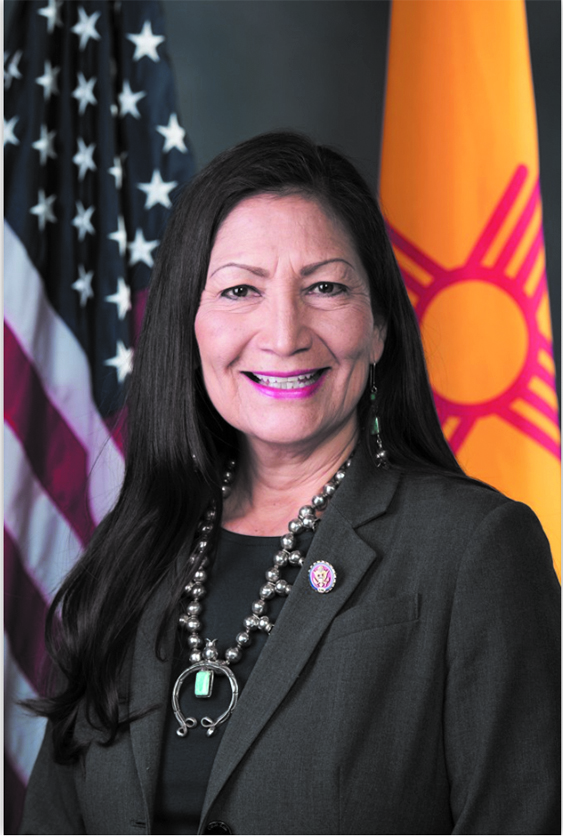
Congresswoman Deb Haaland (Laguna Pueblo), Congresswoman Sharice Davids (Ho-Chunk), and Lieutenant Governor Peggy Flanagan (White Earth Band of Ojibwe), each took to the digital podium and rallied viewers to make their voices heard by voting in November’s presidential election for democratic candidate and former Vice-President, Joe Biden.
“I’m proud that we have the most progressive and forward leading platform for Indian Country ever, especially where the environment is concerned,” explained Representative Haaland, Congressional Native American Caucus co-chair. “Joe Biden has a very strong commitment to fighting climate change, moving our country to renewable energy, and just making sure our voices are heard.
“Tribal leaders must have a say in where we are moving forward, and that’s why I am doing everything I can to get Joe Biden elected. Unlike the present administration, he’d absolutely never appoint a coal lobbyist or gas and oil lobbyist to any of these positions where we know we need someone who cares deeply about our land and Indian Country.”
Haaland and Davids, of New Mexico and Kansas respectively, are the first-ever Native women to serve in Congress, while Flanagan, of Minnesota, is the highest-ranking Native woman elected to executive office in U.S. history. Collectively, these three spectacular leaders have made history as Native women elected to political office. Together they serve their local Native communities on the national stage.
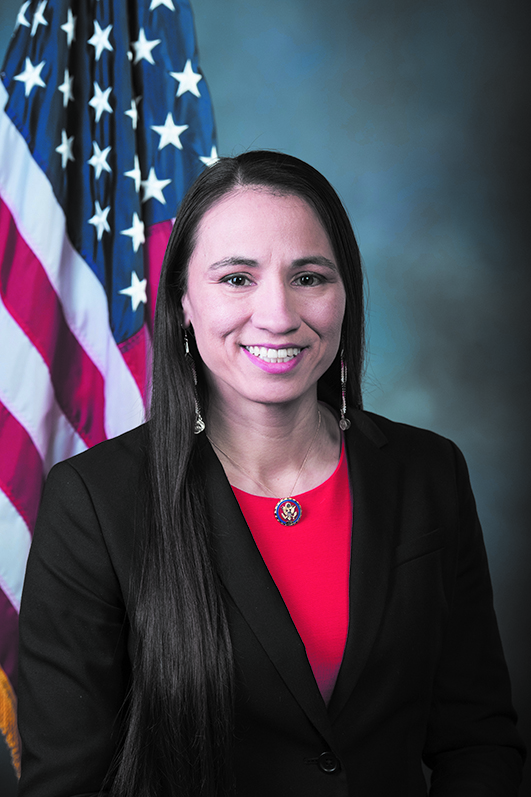
According to Indian Country Today’s database, the number of Native candidates has been rising for several years, with a boost in Native female candidates over Native men.
“It’s such a powerful thing having us in the House of Representatives,” said Representative Davids. “It’s not just that we are in the room, which just by our presence there changes the conversation, but because of our professional backgrounds in Indian law, our experience within Native communities and our reservations, we have a unique ability to educate our colleagues and influence Congressional decision making.
“That’s why I’m so excited to see the record-breaking number of Native folks running for office across the country. We are in an amazing age where Native people are stepping up to participate in local, state or federal legislatures,” continued Davids. “The other thing we have to do is elect folks who are going to be strong partners for our Native communities; candidates and elected officials who will listen to the Native community and actually engage with us. We’ve got that with Joe Biden, which is why so many of us are doing everything we can to get him elected to the White House.”
Within Native communities, we know accurate representation and being given a space to voice our concerns is of the utmost importance. After surviving cultural genocide, westward colonization, and brutal assimilation policies, it took centuries for Native Amerians to finally gain U.S. citizenship in 1924. Even then, the right to vote by tribal citizens wasn’t universally granted until 1962.
Malicious roadblocks remain to this day to suppress the Native vote. Restrictive voting laws throughout the United States often carry a discriminatory effect, either by intent or consequence, for our communities. Some of the major challenges to the ballot box faced by tribal nations include: failure to provide sufficient voting places, lack of proper election resource allocation, restrictive voting laws and removal of federal protections.
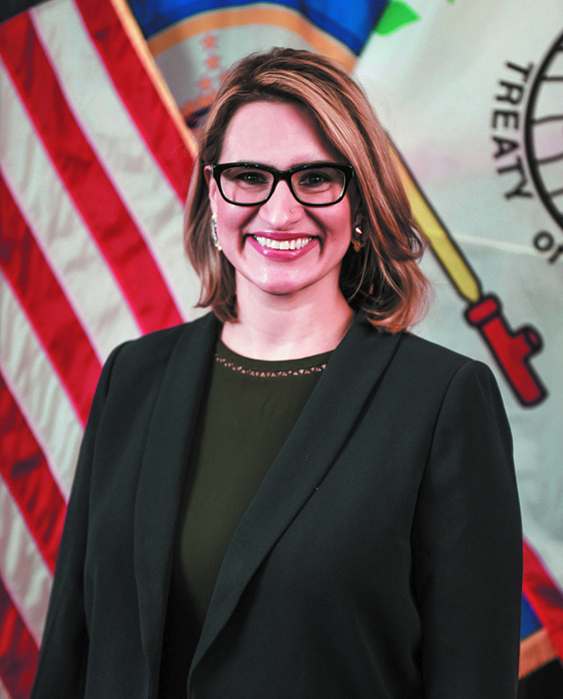
These hurdles have real effects as statistics from the National Congress of American Indians show that almost two out of five eligible Native citizens are not registered to vote. Compounding the matter is the turnout rate of Native registered voters is between 5 to 14 percentage points lower than turnout rates of other racial and ethnic groups.
Transforming attitudes formed by generations of cultural and political exclusion is something that will be a long evolving process and must be addressed by tribes, state and federal officials. Nonetheless, it is important to realize the most powerful form of transformation comes from within.
“Knowing that I work in an institution that was not created by us or for us, but in many ways was created to eliminate us, you can feel the difference that results from having Native people work within these systems,” explained Lt. Governor Flanagan. “It results in true government-to-government relationships, tribal consultation [being more frequent], and passage of policy to address Missing and Murdered Indigenous Women.
“I’m hopeful for the work that we’ve been able to accomplish in partnership with the tribes over the last year and a half,” she added. “But we know we have tremendous amounts of work to do and having a partner in the White House would make a big difference. We have an opportunity to ensure we elect someone who sees us, who hears us, and who values us in Joe Biden. Our voices will be heard and we will make an impact in the weeks leading up to the election.”
The power of true cultural representation and civic engagement by Native citizens of all ages was on full display during the DNC’s two-day Native American Caucus. Topics discussed by Native advocates, activists, and political leaders all echoed the same sentiment, Indian Country will be silenced no longer. The next generation of leaders are taking up the mantle and in full pursuit of fulfilling the dreams of their ancestors.
“Representatives Haaland and Davids, with Lt. Governor Flanagan, all shared the need for more Native Americans to run for public office, while also detailing the importance of getting our youth, 18-26 years old, to be engaged and cast their vote,” reflected Theresa Sheldon. “Overall, the most effective Get-Out-The-Native-Vote message is one that speaks to your local Tribe. We know the U.S. President impacts Tribes and our citizens, but we must make sure our tribal voters understand their vote is their voice. Come Election Day, we need our people to scream loudly that enough is enough!”
Please use the following link to download the August 22, 2020 issue of the syəcəb
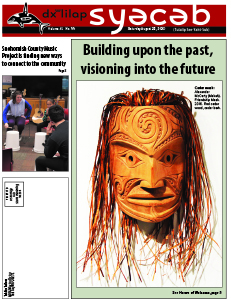
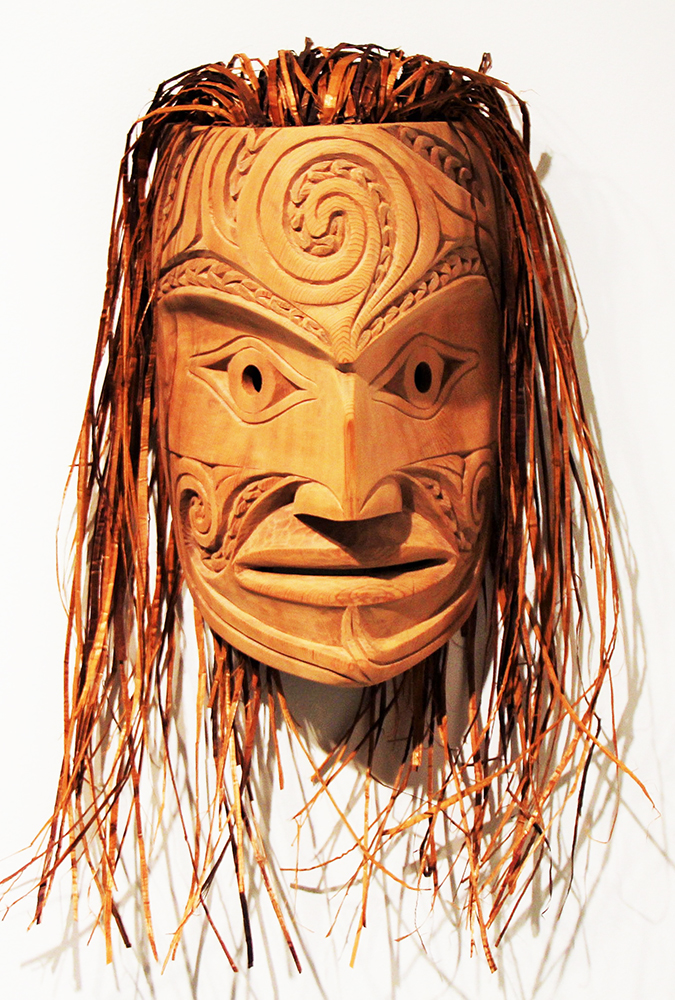
By Micheal Rios, Tulalip News
In the ancestral language of this land, Lushootseed, the phrase sgʷi gʷi ?altxʷ means House of Welcome. More than just a name, the Longhouse Education and Cultural Center at Evergreen State College in Olympia being officially dubbed sgʷi gʷi ?altxʷ gives credence to a reciprocal relationship that is both open hearted and open minded.
Created in 1995 as a public service center, the Longhouse’s mission is to promote Indigenous arts and cultures through education, cultural preservation, creative expression, and economic development.
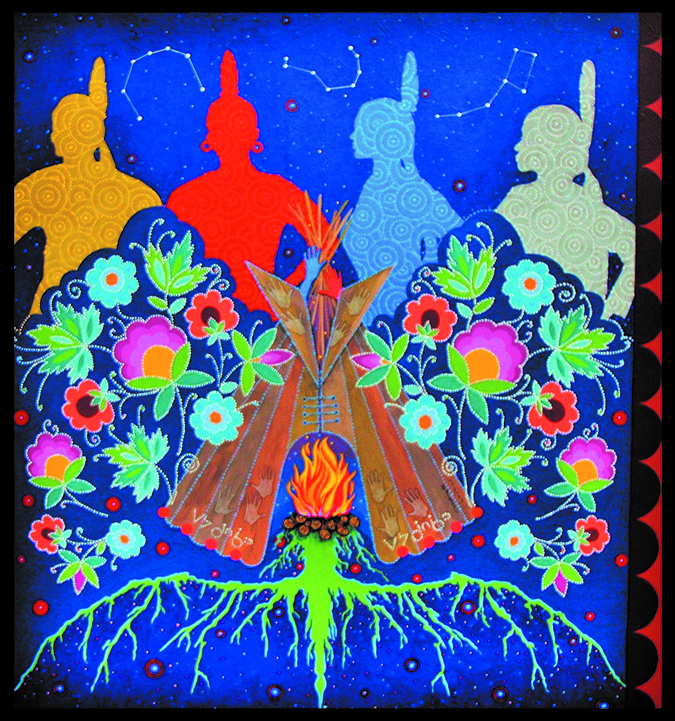
In the beginning, the cultural center’s focus was on six local Puget Sound tribes and their ever-evolving artists. Today, the Longhouse collaborates with highly talented Indigenous artists throughout the Pacific Northwest region, across the nation, and distant lands spanning the globe. Through residency programs with master artists, culture bearers are inspired to develop their abilities while expanding their imaginative capacities in pursuit of creating entirely new boundaries for what defines ‘traditional’ and ‘contemporary’ designs.
“Art allows us to sing without a song, to give our true spirit into something we create out of something nature has given us,” explained Master artist Bruce Subiyay Miller (Skokomish). “Our people create with the natural elements of wood, plant fibers or native plants. Through these acts of creation, our culture continues to live today.”

To celebrate the House of Welcome’s 25 years of groundbreaking work we examine an art exhibition that truly captures the essence of what it means to facilitate cross cultural exchange. Building Upon the Past, Visioning Into the Future showcases cultural concepts and next level skillfulness from over 70 Indigenous artists with whom the Longhouse has built relationship, from the early days, right up to the present.
Curated by Longhouse staff members Erin Genia (Sisseton-Wahpeton Oyate) and Linly Logan (Seneca), this one-of-a-kind exhibition features beautiful artistry from tribal members that call this land home. Local tribal representation include Squaxin Island, Skokomish, Puyallup and many other Coast Salish tribes. Tribes from across the nation are also represented, from Alaska to the Great Plains, and across the Pacific Rim, including Native Hawaiians and Maori artists from New Zealand.
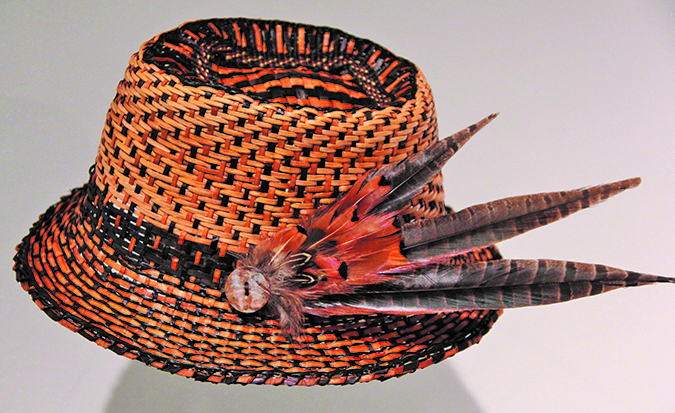
“This exhibition reflects the [twenty-five years] of building relationships with artists locally, regionally, nationally and internationally,” stated exhibition co-curator Erin Genia. “Native artists are using so many different methods for expressing themselves and we really wanted to display as many of those methods as possible. The result is we have close to ninety beautiful pieces of art, treasures really, that make up this exhibition.”

The subjects and techniques exhibited by the Longhouse artists draw from a diverse range of stylistic traditions, which arise from cultural teachings, ancestral lineages, and each artist’s unique experience as Indigenous peoples. Works on display include paintings, drums, carvings, beadwork, photography, baskets, and jewelry.
Glass vessels created using basket designs demonstrate the way traditional design can beautifully translate into new media. Other sculptural forms created in clay, bronze and wood, alongside two-dimensional prints, paintings and drawing spotlight the mastery of mediums that Longhouse artists are fluent in.
“As a curator of this exhibition it’s such an awe-inspiring experience to hear from the artists themselves as to the perspective and inspiration behind their artwork,” added fellow co-curator Linly Logan. “We have artists who are very traditional and roots oriented; artists who use the natural resources around them to showcase their creativeness.
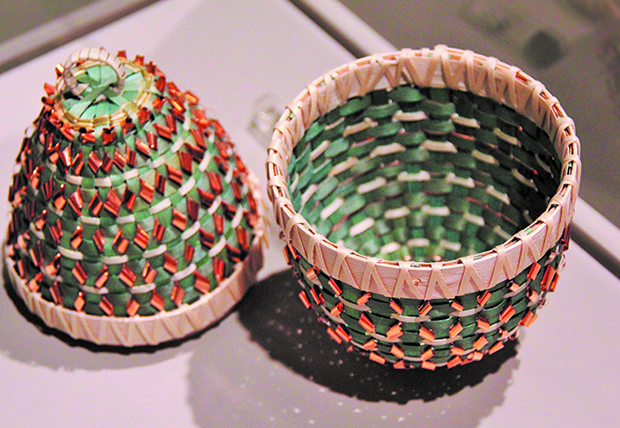
“As Native and Indigenous people we’ve always used the resources around us,” he continued. “In a contemporary lifestyle in nature, we’ve continued to use the resources around us which now include materials other than natural materials. We’ve come full circle in our intent to build upon the past and vision into the future creatively and intellectually as Indigenous people.”
The House of Welcome graciously allowed Tulalip News staff a private tour of the exhibition so that we could share a glimpse of the amazingly creative and exceptional Native art with our local community. These artists are luminaries of their cultures, lighting the pathway back into the far reaches of history, and leading the way into the future with their creative vision.
Submitted by AnneCherise Jensen,SNAP-Ed Coordinator
A healthy breakfast gives us the fuel and the energy we need to make it through the day. Believe it or not, our bodies are constantly burning calories, even when we are sleeping. After the recommended 8 hours of sleep each night, our bodies wake up craving “fuel” aka breakfast.
Research shows breaking an overnight fast with a well-balanced meal could make a significant difference in the overall health and well-being of individuals – especially for youth, teens and children. In fact, that’s where we get the word “break-fast” from, indicating you are breaking a 7-10 hour natural fast that happens while you are asleep. Skipping breakfast can lead to poor mood, low blood sugar, lack of energy and fatigue. However, eating a well-balanced breakfast with whole grains, lean protein, healthy fats, and fruits and vegetables can help improve behavior and school performance as well as foster a healthy weight.
Ultimately, eating breakfast helps us feel more alert, awake, and energized when we start our day. So it’s true when they say, breakfast really is the most important meal of the day. Here are some examples of some easy healthy breakfasts to start your day off right.
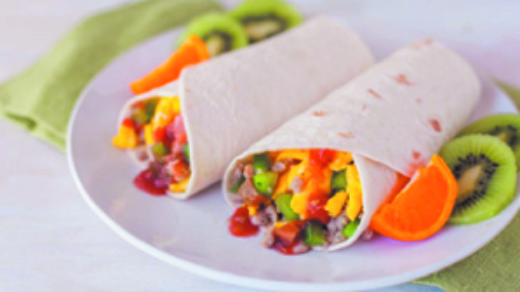
Baha Breakfast Burritos
Ingredients (Makes 4 servings)
Directions
Berry Good Banana Split
Ingredients Serves 1
Directions
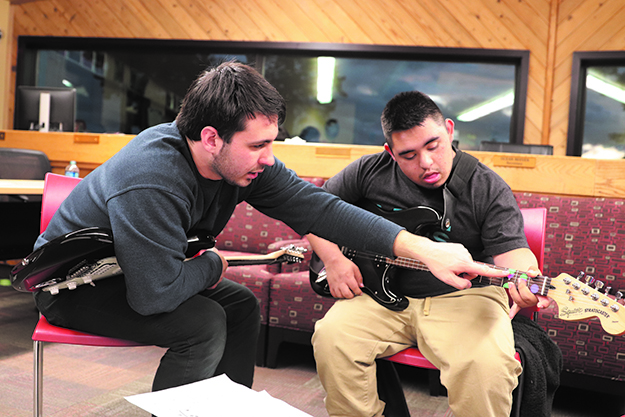
By Kalvin Valdillez, Tulalip News
“I think music is important because I feel like it can have a message and it can help people through a hard time. I feel like music lifts people up,” expressed Tulalip tribal member, Tyler Fryberg.
Music is a universal language. Spoken through drum patterns and chord progressions, music helps communicate how you feel – happy, sad, angsty, dance-y, nostalgic or smitten. And whether you are the songwriter or a carpool karaoke master, music helps you emit that emotion that you might otherwise bottle-up or bury. Many people often tie emotions to music, so when they hear a song on the radio or on their shuffle, they are momentarily taken away to a certain era in their lifetime.
For Indigenous people, music played a significant role in our ancestor’s spirituality and culture. Offering songs to the Creator, the earth and the water is a common practice that is held prior to gatherings across Native America. Songs that tell stories and offer blessings are sung in traditional languages and passed on through the generations. Some songs are so sacred and powerful that they are only performed during ceremony. And that connection Natives feel when hearing those drums and singing those songs with your fellow tribal members is indescribable.
When speaking of emotional and mental health, music can help alleviate extreme feelings and give you the courage and confidence to get some serious healing work done. More and more people are coming to realize what Native people have known for generations; music is medicine.
The Snohomish County Music Project (SCMP) is continuing to have a meaningful impact on the Tulalip community in the wake of a worldwide pandemic. With services offered at the Betty J. Taylor Early Learning Academy (TELA) and Quil Ceda Tulalip Elementary (QCT), as well as several other schools throughout the Marysville School District (MSD), the music project assisted close to 500 tribal students either enrolled Tulalip or with another sovereign nation.
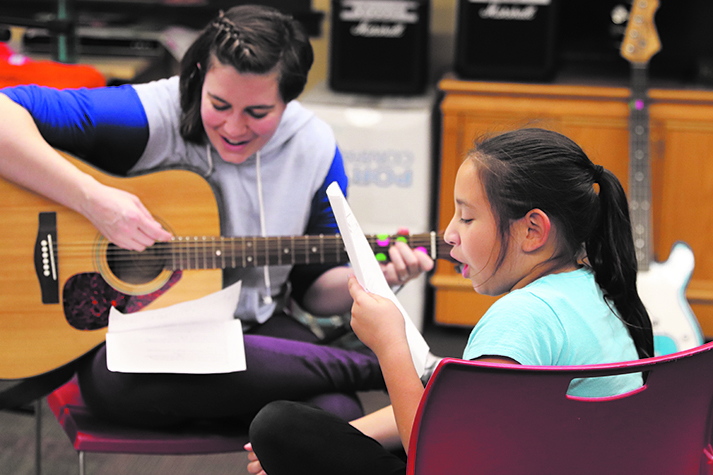
“We’re a music therapy organization and we’re here to support individual and collective well-being,” explained SCMP Music Therapist, Vee Fansler. “We have an anti-oppressive approach and a trauma informed approach, so everything we do is coming with an awareness of the bigger context that shape our internal health.”
Added Colby Cumine, Music Therapist, “We are a non-profit and we provide music therapy services to the greater Snohomish county area. We have a lot of different programs and people we work with ranging from infants to adults; adults with dementia, adults and kids with disabilities, kids with trauma, veterans and in-patient psych hospitals.”
Natives withstood years of violence as the U.S. Government attempted to erase our culture and identity. The forced assimilation era, and the unspeakable acts that happened at the boarding schools, were traumatic experiences that involuntarily trickled down through the generations. And without a complete understanding of how generational trauma affects one’s well-being, many people’s mental state went untreated for a number of years and certain cycles continued or in some situations, escalated.
SCMP has taken an approach to help people heal and work through traumatic life events by using music therapy. For the past several years, Vee’s voice has become widely recognizable amongst the youth as they built a strong bond together through the common language of music. Colby is another positive influence on the Tulalip youth as he also hosts music therapy sessions, both individual and group, with TELA and MSD elementary students and the weekly ‘yoU ROCK’ rock band rehearsals, which have become quite the social happening amongst young adults living with special needs.
The music project was in perfect rhythm, reaching a large volume of people and providing them with the necessary tools, resources and outlets to heal after life altering events. But then the team reached a caesura, a short abrupt break in the music, when the coronavirus struck and the SCMP was forced to switch tempos.
“There are so many needs that are present in our communities, we needed to make ourselves available to support people’s mental health, in the context of the pandemic, and not put people at more risk,” expressed Vee. “We did a lot of outreach to children and families because we usually contact people through schools, especially at Tulalip, most of our work happens in the schools.”
Opting to continue providing services to their clients during the pandemic, the music project decided to go completely digital and since the beginning of the pandemic, their clients have grown their knowledge about music by working on arrangements that they are familiar with and that appeal to them. The music they work on, both individually and as a group, crosses barriers and multiple genres ranging from classic Disney sing-a-longs to old school hip hop and even country-western.
“We created a series of YouTube videos. Some of the therapists recorded songs to send out to people in the community who are stuck at home for the first time and maybe in need of things to do or activities,” said Colby. “I started a weekly livestream on Facebook, we have a YouTube playlist that families can use at home to interact with their kids, and we will be having these weekly livestream jam sessions. And in addition to that, reaching out to everyone I typically see in a small group setting or in a one-on-one capacity, for me that was mostly kids in the behavioral program, and seeing if they would be able to do telehealth.”
Vee explained that initially the SCMP attempted to transfer all of their services to an online format, but quickly learned that Zoom and teleconference music sessions come with a whole new set of challenges, such as timing.
“We can’t do live music very well with another person over the computer,” Vee stated. “That [timing] lag has been a struggle, and doing music with very young children has been a struggle. Prior to the pandemic we had a lot of individuals we saw at early learning that involved a lot of moving through space together and playing instruments together, and that is so different on a computer screen. The programs that have really translated the best have been with older children, ages 10 and up, who have a lot of experience with technology and interest in planning out sessions and practices for themselves.”
One key emphasis the music therapists are focusing on during this time period is how to navigate through these COVID-19 times safely, and how to process those emotions in a healthy, productive manner.
“There were a lot of folks who were grateful and happy we were able to continue to meet over Zoom,” Colby said. “They were overjoyed to interact with their peers again. Initially there was confusion in terms of what things were going to look like, because we still didn’t know if school would be coming back anytime soon. So in those therapy sessions, the focus was working through those feelings of confusion and sudden change in routines and schedules. And also working through those anxieties and uncertainties of the school year ending, and people expressing sadness of not being able to say goodbye to their friends who were graduating or moving on to a new school.”
When MSD canceled in-person lectures for the safety of their students and faculty, they in-turn provided their students with Chromebooks in order for them to continue their education online, which included music therapy sessions.
“The Chromebooks gave us access to kids and families,” said Vee. “For us to know the families had the necessary tools and technology for telehealth sessions, we were able to do instrument loans during the pandemic.”
“I am learning the ukulele with Colby,” happily reported Tyler. “I am learning how to play ‘You Got a Friend in Me’, and I have learned how to play happy birthday songs. I may not practice every day but I do practice between thirty minutes to one hour when I do practice.”
The music project has also continued with the rock band project, holding weekly rehearsals in which bandmates can catch up, converse and create.
“The rock band has grown in size since the pandemic,” Vee said. “That’s our group with young adults with developmental disabilities. The goal of that group has always been giving people the opportunity to connect with their peers. Especially since we know that disabled children tend to be separated from their peers a lot. And when they get out of the school system, all of those social supports that were built sort of just fall away. I think that’s a group where their top priority was just wanting to see each other, and they didn’t care as much if the musical product was perfect in terms of the timing. They mainly just wanted to chat, share their songs, listen to things together, and laugh. That has translated really well into telehealth.”
During a time when many are self-isolating, the unknown that tomorrow may bring weighs heavy on a lot of minds. Many are experiencing loneliness and that’s why it’s important programs like the SCMP are available to those seeking assistance with their mental health.
“It feels great to have Colby and the music project because I still get to do music class on Zoom during this time,” Tyler expressed. “I still feel like it is the same no matter how we have to do the music. It is rewarding and you get to have fun and be around people and learn music. Rock band sessions really help with social skills and being confident with yourself. I had a hard time feeling confident but with Colby’s help, it made me feel better in myself.”
The Snohomish County Music Project is currently accepting new clients. If you or your children are interested in learning a new skill, while equipping yourself with the emotional tools to navigate the coronavirus and end trauma cycles, please reach out to the music project at (425) 258-1605 or visit their website, Facebook or YouTube pages for more information.
“I enjoy working with these kids and their families,” said Colby. “I enjoy their personalities and who they are. I appreciate being able to work and interact with them. This is a very difficult, confusing and challenging time but we will be able to work through it together. I’m happy there is a strong community and that we’re able to be a part of it with the Tribe.”
Vee added, “The main thing I hope the people know is we are here for anyone in the Tulalip community who has any difficulties that are coming up in terms of mental health, in feeling connected with their children or needing resources in continuing to care for children, in dealing with the trauma that comes with the pandemic and other traumas that have layered on top of that. I’m really thankful that we’ve been able to stay connected with this community and to keep having the relationships with the kids that we really care about.”
Please use the following link to download the August 15, 2020 issue of the syəcəb
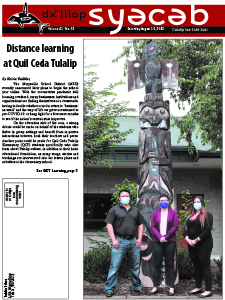
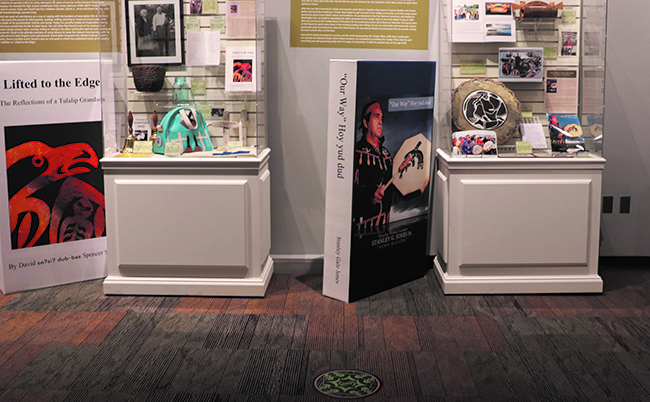
By Kalvin Valdillez, Tulalip News
Nine years ago, a grand opening was held in a newly constructed building located on the Tulalip reservation. Nearly 23,000 square feet, the building would serve as a gateway, where visitors could get a glimpse into the lifeways, as well as learn the true history, of the original caretakers of this region. During those nine years, thousands of people walked into the doors of a museum, perhaps on a field trip with a local school, or a romantic getaway while staying at the Tulalip Resort Casino, or maybe just to kill time. Whatever the case, many people walked out with a new perspective and at least a little more knowledge than provided in local history classrooms.
The idea was to provide the Tulalip experience to non-tribal members while also showcasing, preserving and reclaiming various keepsakes such as tools, art, jewelry, baskets, drums, photos, and carvings, to name a few, that were passed on through individual families throughout the generations. And by sharing their story, and hosting countless culturally focused events and community driven classes, the Hibulb Cultural Center and Natural History Preserve (HCC) has become a favorite spot to frequent amongst locals who visit often, whether to tour the exhibits with the family or attend a lecture or art lesson instructed by a Tulalip tribal member or Indigenous peoples from other tribes. And due to the popularity within the greater Snohomish county region, including the Marysville, Arlington, Everett and Stanwood communities, the museum is highly recommended to out-of-towners seeking a one-of-a-kind visual, interactive and sometimes eye-opening experience.
Aside from Mondays, the only day of the week the HCC is closed, the museum opened their doors every day, inviting the public to explore and learn more about the sduhubš way of life, whether about treaty rights, forced assimilation, or ancestral teachings and traditions. That is, until the coronavirus hit causing the HCC to close for an extended period of time for the safety of the museum staff and visitors alike.
Now, with new safety measures and precautions in place, the Hibulb re-opened their doors to the public on August 4, 2020, after several months of closure and merely days before the museum’s ninth birthday.
“It feels exciting,” exclaimed Mytyl Hernandez, HCC Marketing and Public Relations. “We were closed for a really long time and it’s refreshing to be back with all of our co-workers and to see everybody again. We opened back up and are operating on normal business hours, but we are not doing any tours or events just yet.”
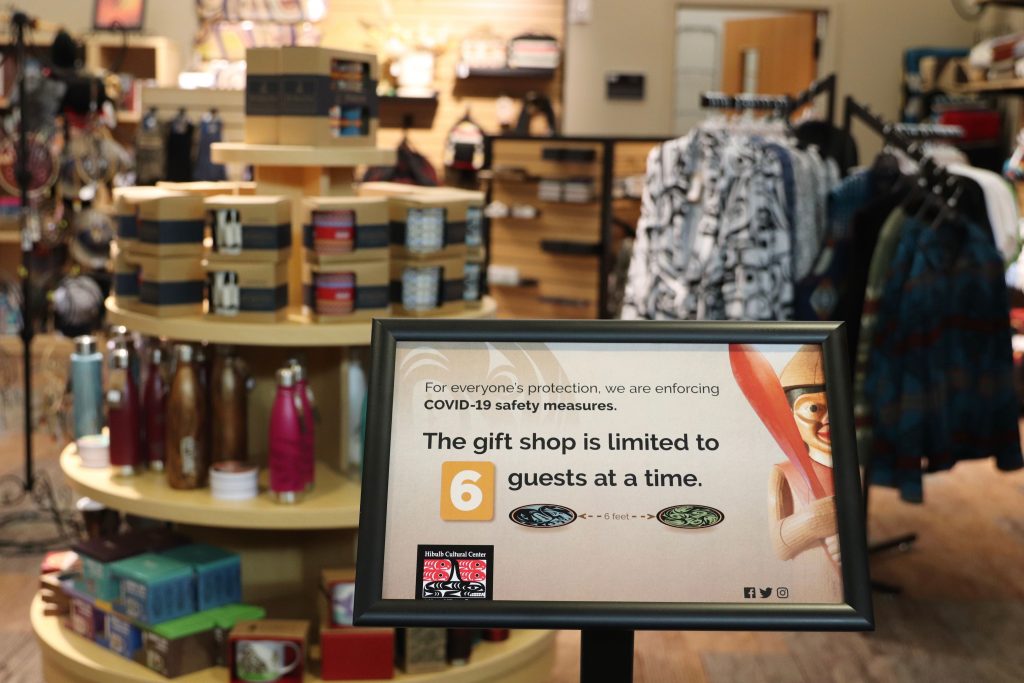
The key exhibits are still fully accessible, save for a few hands-on interactive stations. During a walk through, return visitors can still view some of their favorite displays and new guests will continue to get an understanding of the Tulalip people and their journey since pre-colonial times to present day. Signage is posted throughout the museum, offering a friendly reminder that masks are required, as well as indicate displays that are temporarily unavailable or restricted to a certain amount of people at a time.
“It’s essential and required to wear a mask,” Mytyl explained. “We have markers to encourage and keep people social distancing. We’ve got hand sanitizing stations. Our cashiers are wearing gloves and we’ll also have Plexiglas shields for them. We’re using only one entrance and exit, so we can keep track of how many people are in the building. Certain exhibits are limited to a certain amount of people, whether it’s three of four, and the gift shop is limited to six people. We’re doing our best to keep our team and our guests safe and healthy. We’ve got a lot of hands on deck and we’re doing lots of cleaning in the exhibits in between guests. Just about every hour we’re wiping things to down to keep sanitary.”
Before the COVID pandemic occurred, the HCC was granted access to display the 1855 Treaty of Point Elliot by the National Archives as a part of their History of Tulalip Literacy exhibit, in which many Tulalip writers and storytellers were featured. The museum closed only weeks after the Literacy exhibit was launched, and the historic treaty that defined the inherit rights of not only the Tulalip people, but several surrounding tribes as well, received less attention than originally anticipated due to the pandemic.
“We do still have the treaty on display,” Mytyl happily reported. “The National Archives will be deciding how much longer we can keep it on display. So, we have it for now, and as soon as we find out how long we can keep it, we will definitely get that news out into our community.”
The HCC is back to their regular scheduled hours of 10:00 a.m. – 5:00 p.m., Monday through Friday, and 12:00 p.m. – 5:00 p.m. on Saturdays and Sundays. For more information, please contact (360) 716-2600, or visit the Hibulb Cultural Center’s Facebook page.
“We’re really excited to be back,” expressed Mytyl. “We had a good response from our community and guests, and they are super excited for us to be open. It feels great to give people something else to do, and we believe that we can do it safely.”
By Kalvin Valdillez, Tulalip News
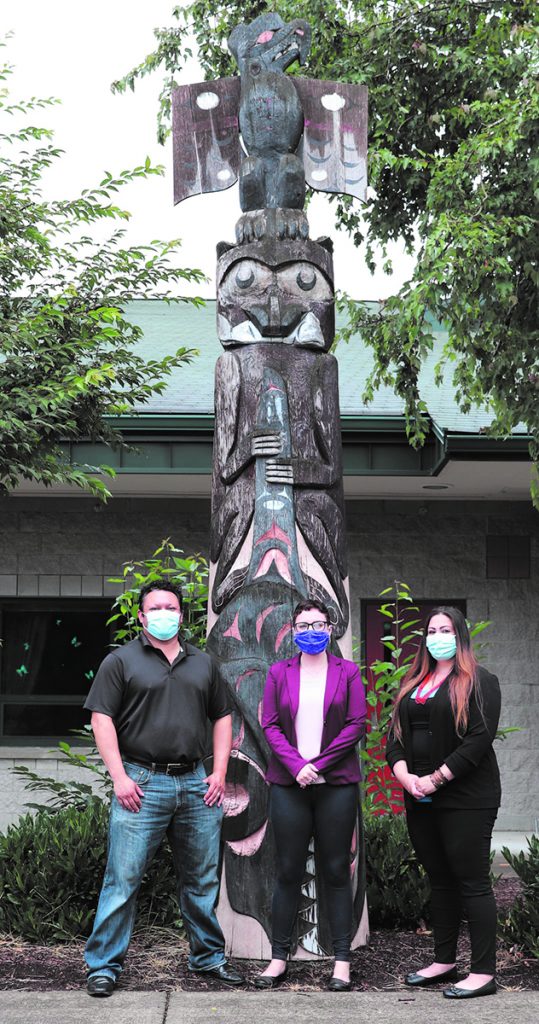
The Marysville School District (MSD) recently announced their plans to begin the school year online. With the coronavirus pandemic still looming overhead, many businesses, institutions and organizations are finding themselves at a crossroads, having to decide whether or not to return to ‘business-as-usual’ and the way of life we grew accustomed to pre-COVID-19, or hang tight for a few more months to see if the nation’s current state improves.
On the education side of the coin, a strong debate could be made on behalf of the students who thrive in group settings and benefit from in-person interactions between both their teachers and peers. Another point could be made for Quil Ceda Tulalip Elementary (QCT) students specifically who also learn about Tulalip culture, in addition to their basic educational foundation, as many songs, stories and teachings are interweaved into the lesson plans and activities at the elementary school.
“With the news that the Marysville School District is going to be doing a remote learning start, we want to prioritize student safety, community safety, staff safety, family safety above all else,” said QCT Principal, Sarah-Marie Boerner. “We recognize it’s a difficult decision and that it is going to create challenges for everyone. What we’re looking at, at this point, is identifying what are our priorities and what are the things we can learn from our spring experience and do better; refine, polish, adjust, change, so that we are better meeting the needs of our student population and our families. That isn’t to say we don’t have an incredibly dedicated staff that put in their all last spring, but a huge part of being an educator and being a part of a learning institution is recognizing that we also have to learn and grow.”
The virus outbreak occurred before the last quarter of the 2019-2020 school year began. When Washington State Governor Jay Inslee issued a stay-at-home order and people went into lockdown mode, MSD handed out over 1,000 Chromebooks to their student body in order to finish out their school year amidst a world-wide pandemic. The students held on to their Chromebooks during the summer months, and with school starting in a few short weeks, they are already prepared for what the district is dubbing ‘Continuous Learning 2.0’.
Continuous Learning 2.0, Principal Boerner mentioned, will be a more detailed approach to distance learning, or the online learning experience that occurred at the end of last school year, with a strong emphasis on garnering more engagement from the students and their family.
“These times right now are very difficult for our families,” said QCT Assistant Principal Yolanda Gallegos-Winnier. “Businesses are closing; people are getting laid-off from work – people are figuring out what’s next for their family. Unintentionally school can be put to the wayside, so how do we think outside of the box and develop opportunities for learning?”
She continued, “A lot of our kids come from traditional fishing families. My husband is enrolled Yakama and we fish on the Columbia. As a teacher, my mind started thinking about how can we model this for staff; how do we learn more about Indigenous ways and teachings. I started taking photos of my daughter fishing, I was inspired by Natosha Gobin’s videos. I’m going to narrate as my daughter pulls fish up and uses the net, and while she is cleaning and cutting we’ll talk about math and how many fish she caught for the day. If we can get to a point where we can disseminate that information to the Tribal parents, maybe we can do something together similar to the online powwows where we incorporate those teachings into our lesson plans and involve the community. Perhaps we have a kid who is crabbing narrate the process– that is essentially writing an essay about what it means to crab for his people and bring food to the table. Kids out here are so smart, they know about the seasons and the specific crabs, they know about fish; blueback from a sturgeon to a steelhead. We have to connect those things quickly so we can have more engagement.”
A lot of conversation, debate and intention went into planning for the upcoming school year, both at the individual school level and at the district level. Several sub-committees were created, as well as task forces who sent out numerous surveys via e-mail and phone calls, trying to get a better idea of how to best serve their students and community during such trying times. Continuous Learning 2.0 is actually just the first phase in a three-step plan that will ultimately help kids transition back into the classroom by the end of the 2020-2021 academic year. The first phase is strictly online, while phase two is a hybrid model that will require participation both in the classroom and online. In phase three, lessons will be ‘100% in-person instruction’.
Bearing all of that in mind, there are many checkpoints that must be made along the way back to the classroom to ensure both staff and student guardians are on the same page. Which brings us to the five key areas that QCT plans on prioritizing during the first quarter of the year and will likely extend into the long-term planning for the elementary.
“Priority one is thinking about our model for distance learning,” Principal Sarah-Marie explained. “We’re thinking about how we can have clear consistent guidelines to make the schedule easily accessible and easier for families to navigate. We’re also thinking about the essential standards that we need to identify for student learning, so our kids are still getting those core foundational pieces that are going to serve them well all the way through, in both this distance model, the hybrid model and going back to a traditional schoolhouse at some point.
“Priority three is about the engagement of students and families. One of our biggest areas of growth and possibility is better engaging our students on the online format. Because honestly, many of us haven’t done this before. We have professional learning resources we’re engaging in with our staff.
“We’re also thinking about equitable access and our kids who are furthest from educational justice. Not only identifying who those students might be, but also thinking about tailoring some additional support for those families. And the final priority is recognizing we need to step up our communication. We aren’t going to have as many opportunities through person-to-person contact, so recognizing that we need to be planning how we’re going to communicate consistently, regularly and provide two-way communication with families.”
Aiming to keep the lifeways of the Tulalip people a central focal point of their teachings, QCT plans on sticking with some of the traditions put in place many years ago to continue highlighting the Tribe’s culture such as Lushootseed lessons, and continuing to start each day with a traditional Tulalip song, famously known by the students as ‘the morning song’. The school is also making an extra effort to ensure that at least one Indigenous staff member sits on the various committees, guaranteeing that the Native voice is heard, valued and considered during decision-making processes.
“We’re moving forward with a thoughtful three to five-year plan,” said Assistant Principal Gallegos-Winnier. “Our vision and dream for the school is following the Tribe’s voice and the Tulalip people’s expectations for their children. Lushootseed is absolutely a part of that. We as Indigenous people have always had traditional ways of knowing, learning and teaching. School walls don’t define education for our people or our children. Our schooling and education have always been developed in our families, in our community and with the knowledge and teachings of our elders and ancestors.”
“Although school is online, we will continue to fish, hunt, sing, and support each other within our families and overall community as a people,” she continued. “There is writing in our hunting experiences. There are speech and math opportunities in our knowledge and skill set of our young fishermen and women who have been fishing and crabbing with their families.”
QCT is reaching out to you, the Tulalip parents, family, students and community, for any feedback on how to better engage the students at the start of the school year to ensure they are receiving the knowledge of the Tulalip people and implementing it when necessary into their daily teachings.
“I miss the kids; the staff misses the kids,” Yolanda expressed. “There’s a lot of grief in not being able to have those one-on-one class relationships. Just walking through the hallways, it’s so quiet and empty, wondering when will we be safe to open up and have the kids back. Right now, my hope is that as a community we can come together and figure out how to be able to make a successful online educational program for our students here at Quil Ceda Tulalip. In closing, the question is, how do we tie all of that into online learning and make the connection between school and home for your student. We need your help in this process, we can’t do this without you. Please call or email us for ideas, suggestions and feedback.”
For more information, please contact Quil Ceda Tulalip Elementary at (360) 965-3100.